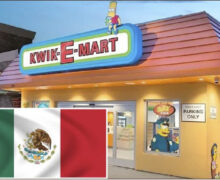
Canadá Necesita 1.4 millones de Inmigrantes para Ocupar Puestos Vacantes
Canada Needs 1.4 Million Immigrants to Fill Vacant Positions
El país norteamericano dio a conocer un plan para aceptar a cerca de 500.000 migrantes por año hasta 2025 con la idea de reducir la brecha laboral que existe actualmente.
“Miren, esto es simple: necesitamos más personas”.
Con estas palabras el ministro de Inmigración de Canadá, Sean Fraser, dio a conocer los planes para darle la bienvenida a cerca de 1.4 millones de migrantes en los próximos tres años.
De acuerdo al anuncio de Fraser, Canadá espera recibir a 465.000 nuevos residentes permanentes en 2023, 485.000 en 2024 y llegar hasta los 500.000 para el año 2025.
Esto significa un aumento de cerca del 13% de las metas iniciales que tenía el gobierno canadiendese.
Para ellos, la medida tiene como principal objetivo reducir la brecha laboral que existe ahora en el país, donde decenas de miles de empleos disponibles no han podido ser cubiertos.
Y va en contravía de lo que promueven otros gobiernos como el británico, que ha sido fuertemente criticado por su política migratoria, o Estados Unidos, donde las últimas acciones han tendido a endurecer las medidas de control migratorio.
“El plan de inmigración ayudará a las empresas a encontrar los trabajadores que necesitan“, dijo Fraser.
Una de las principales razones detrás de la nueva apertura es que las vacantes laborales que se crearon durante la pandemia del covid-19 no se volvieron a llenar.
Los números en este sentido son paradójicos en Canadá: mientras registran un total de 950.000 vacantes en distintos sectores, también hay un millón de personas desempleadas.
La brecha está creada porque la mayoría de ellas no tiene las herramientas o las habilidades para poder cubrir esas vacantes o, como sucede en algunas regiones, no viven en las áreas donde se necesitan trabajadores en el momento.
A este fenómeno, de acuerdo con lo señalado por el gobierno, también se suma que cada vez más ciudadanos canadienses se retiran de sus trabajos, lo que ha creado un vacío que no ha sido posible llenar.
Además, este programa también busca aumentar el reasentamiento de los refugiados que actualmente depende de la asistencia del gobierno.
Pero, ¿quiénes son las personas que está buscando el gobierno canadiense?
Sector salud, software y restaurantes
No es la primera vez que Canadá abre sus fronteras para atraer más inmigrantes, pero sí es la primera vez que se hace a esta escala.
“Los canadienses comprenden la necesidad de aumentar nuestra población si vamos a satisfacer las necesidades de la fuerza laboral, si vamos a equilibrar una tendencia demográfica preocupante y vamos a seguir reuniendo a las familias”, dijo Fraser durante la presentación del nuevo plan.
Aunque el gobierno señaló que la falta de mano de obra calificada impacta en todos los sectores de la economía canadiense, las cifras de los análisis gubernamentales señalan que uno de los más afectados es la prestación de servicios médicos.
Y a este sector le siguen la construcción, manufactura, hotelería y turismo, que incluye a los restaurantes.
Según Fraser, Canadá tiene alrededor de tres trabajadores por cada ciudadano jubilado, por lo que los objetivos de la llamada “migración económica” son prioritarios.
“Necesitamos más trabajadores en todos los sectores en todas las regiones del país, independientemente de si se trata de trabajadores de atención médica de primera línea, conductores de camiones, constructores de viviendas o ingenieros de software”, dijo.Tal es la necesidad, que aunque el partido conservador canadiense, que está en la oposición al gobierno de Justin Trudeau, ha criticado la decisión anunciada esta semana, había aceptado la necesidad de una apertura de la inmigración.
Sin embargo, algunos expertos señalan que no será un proceso fácil debido a la crisis financiera que vive no sólo Canadá sino las principales economías en el mundo, marcada por el aumento de las tasas de interés y la alta inflación.
Así, el economista de la Universidad de Waterloo Mikal Skuterud, señala que, aunque hay muchas razones para aumentar el número de inmigrantes en Canadá, la situación actual no es muy favorable para la apertura que el país norteamericano desea conseguir.
“El aumento de las tasas de interés tal vez dificulte la integración de esas personas al país una vez lleguen”, le dijo Skuterud a la agencia de noticias Reuters.
“Estamos en una verdadera especie de punto de inflexión. Hay una enorme cantidad de incertidumbre”, agregó.
The North American country unveiled a plan to accept about 500,000 migrants per year until 2025 with the idea of reducing the labor gap that currently exists.
“Look, this is simple: we need more people.”
With these words, Canada’s Immigration Minister Sean Fraser unveiled plans to welcome nearly 1.4 million migrants over the next three years.
According to Fraser’s announcement, Canada expects to welcome 465,000 new permanent residents in 2023, 485,000 in 2024 and up to 500,000 by 2025.
This means an increase of about 13% of the initial goals that the Canadian government had.
For them, the measure’s main objective is to reduce the labor gap that now exists in the country, where tens of thousands of available jobs have not been filled.
And it goes against what other governments such as the British promote, which has been strongly criticized for its immigration policy, or the United States, where the latest actions have tended to tighten immigration control measures.
“The immigration plan will help businesses find the workers they need,” Fraser said.
One of the main reasons behind the new opening is that the job vacancies that were created during the covid-19 pandemic were not filled again.
The numbers in this sense are paradoxical in Canada: while they register a total of 950,000 vacancies in different sectors, there are also a million unemployed people.
The gap is created because most of them do not have the tools or skills to be able to fill those vacancies or, as happens in some regions, they do not live in the areas where workers are needed at the moment.
In addition to this phenomenon, according to what the government has indicated, it is also added that more and more Canadian citizens are retiring from their jobs, which has created a vacuum that has not been possible to fill.
In addition, this program also seeks to increase the resettlement of refugees who are currently dependent on government assistance.
But who are the people the Canadian government is looking for?
Health sector, software and restaurants
It is not the first time that Canada has opened its borders to attract more immigrants, but it is the first time that it has been done on this scale.
“Canadians understand the need to increase our population if we are going to meet the needs of the workforce, if we are going to balance a worrying demographic trend and continue to reunite families,” Fraser said during the presentation of the new plan.
Although the government pointed out that the lack of skilled labor impacts all sectors of the Canadian economy, figures from government analyzes indicate that one of the most affected is the provision of medical services.
And this sector is followed by construction, manufacturing, hotels and tourism, which includes restaurants.
According to Fraser, Canada has about three workers for every retired citizen, so the goals of so-called “economic migration” are a priority.
“We need more workers in every sector in every region of the country, regardless of whether they are frontline health care workers, truck drivers, home builders or software engineers,” he said. Such is the need, that Although the Canadian Conservative Party, which is in opposition to the government of Justin Trudeau, has criticized the decision announced this week, it had accepted the need for an opening of immigration.
However, some experts point out that it will not be an easy process due to the financial crisis that not only Canada but the main economies in the world are experiencing, marked by rising interest rates and high inflation.
Thus, the economist at the University of Waterloo Mikal Skuterud points out that, although there are many reasons to increase the number of immigrants in Canada, the current situation is not very favorable for the opening that the North American country wants to achieve.
“The increase in interest rates may make it more difficult for these people to integrate into the country once they arrive,” Skuterud told the Reuters news agency.
“We are at a real kind of tipping point. There is an enormous amount of uncertainty,” he added.
























